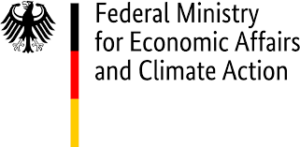A new study by RMI, Sustainable Finance Observatory (formerly 2DII) and SURA Investment Management shows that investing in climate-aligned transition funds does not mean incurring greater risk or giving up returns for institutional investors.
Whilst there have been many public statements by investors of their commitment to ‘align’ their investments with 2030 and 2050 climate targets, there has have been very limited analysis of what it means in practice to try and align a diversified portfolio allocation.
In the case of listed securities, it would be easy to manage transition risks by simply divesting from climate critical sectors, but this will not drive the transition of companies in these sectors, in fact it could have unforeseen effects, restricting access to capital to the very companies that need to invest in and manage the necessary technology transitions, and losing the power to influence their strategic decisions through active ownership practices. This is particularly important in emerging economies, where access to capital to respond to development needs could be restricted if there is not a careful management of the transition to a low carbon economy.
Therein lies the challenges in designing a ‘Paris aligned fund’ – since the economy itself is largely currently misaligned, the choice for investors is whether to concentrate their allocations on those few companies that are aligned, or to diversify across those companies that have committed to working towards alignment. To address these challenges in the Latin America context, a pilot study was carried out by RMI, Sustainable Finance Observatory (formerly 2DII) and SURA IM to design prototype listed equity and bond portfolios with an active and forward-looking perspective on the climate performance of issuers and investee companies. The study is based on an evaluation of over 200 Latin American issuers, where possible, according to their alignment with below 2° climate scenarios measured using the PACTA methodology, and supplemented by their decarbonization commitments, plans and emission trajectories.
The outcome from this study is a fund concept that represents a first step in the process of integrating climate alignment into the standard investment evaluation and portfolio construction process of an asset manager. It sets out how listed equity and fixed income portfolios can be constructed based on the issuers’ climate performance evaluation, with the overall aim being to seek to contribute to progressive reductions in CO2 emissions reductions in the real economy over time that are aligned with Paris Agreement pathways. In particular, the study identifies how two key milestones in fund design can be achieved:
- The use of company-level forward capital commitments as the basis for new metrics to objectively evaluate the potential future performance of issuers.
- The integration of climate performance into the portfolio weighting and bond selection steps, thereby influencing issuer selection and capital allocations.
Financial analysis of the resulting fund compositions shows that it is possible to construct a climate portfolio that is sufficiently diversified and that has a consistent performance compared to the selected market benchmark (MSCI Latam and CEMBI Latam), demonstrated by tracking error ranging from +0.98 percent (fixed income) to +10.5 percent (listed equity). Both portfolios showed a return above the market benchmarks (2.6 percent for fixed income and 11.8 percent for listed equity) although this could respond to particular market conditions and might not be caused by the climate alignment of the issuers.
Given the need to focus on transition of the economy, a key mechanism for such a fund to achieve CO2 emissions reductions and therefore impact in the real economy would be active engagement with investee companies and bond issuers to align their climate performance and forward capital commitments with below 2oC decarbonization pathways. An engagement strategy has been designed that focuses on the tracking of real-world outcomes and the use of investors´ levers of influence to request change, backed up by clear milestones for progress and, if necessary, escalatory measures.
In the Latam context, this new fund concept creates the potential for asset managers to take a more active role in the growth and development of a decarbonized economy, in turn creating more opportunities to invest in companies that in the context of the climate emergency have longer-term economic prospects.
Funder: This project has been Funded by the International Climate Initiative (IKI) that is supported by the
Federal Ministry for Economic Affairs and Climate Action (BMWK), based on a decision of the German
Bundestag.


Disclaimer: This report reflects only the authors’ views. The German Federal Ministry for Economic Affairs and Climate Action
(BMWK) is not responsible for any use that may be made of the information it contains.



